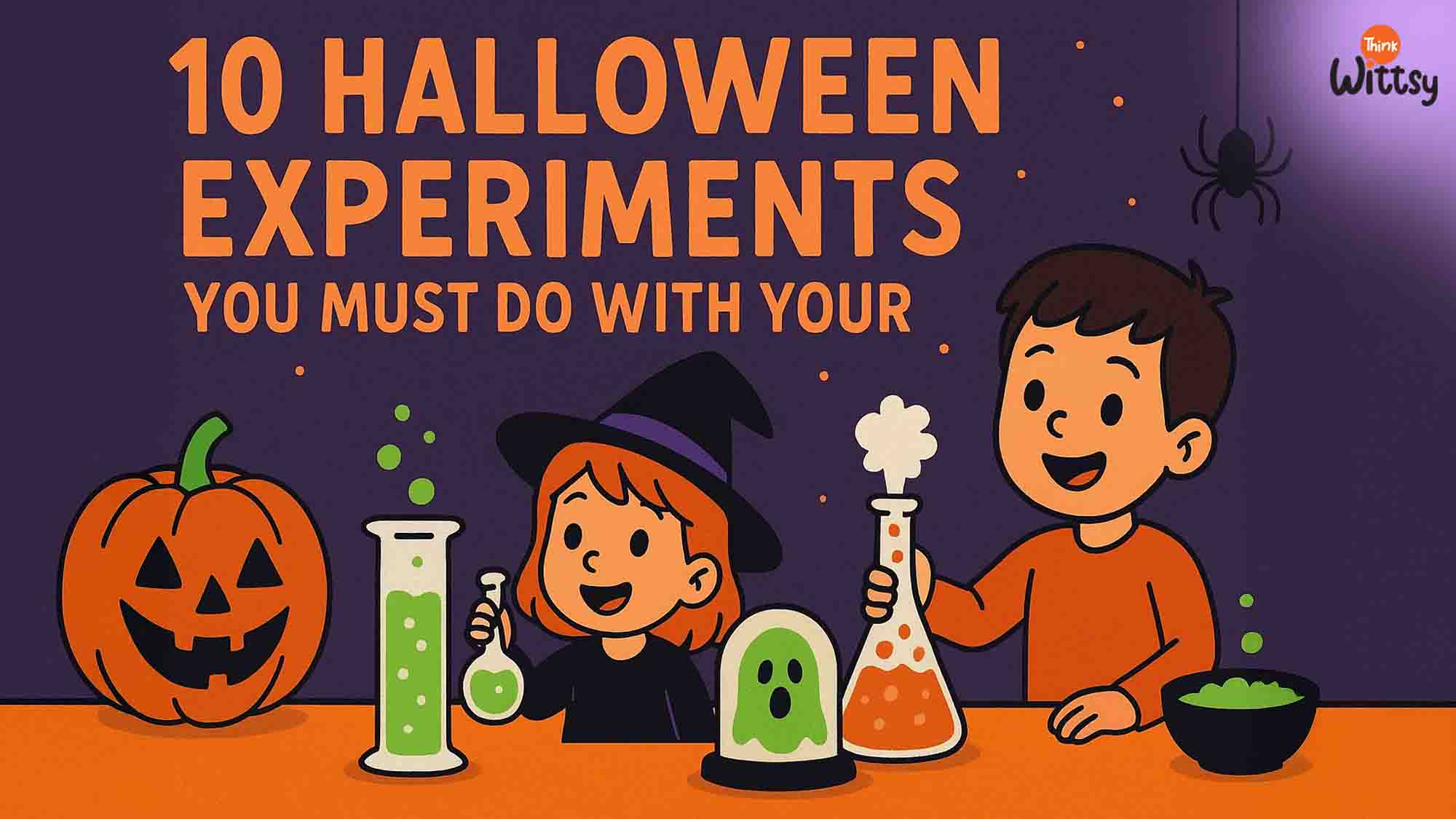Halloween is the perfect time to mix a little magic with a lot of learning. At Think Wittsy, we believe that science isn’t something you just read about it’s something you do. These ten spooky experiments turn everyday materials into bubbling brews, glowing goo, and floating ghosts. Each one helps kids discover real scientific principles in fun, hands-on ways just like our Magical Mineral Mines kits, where play and discovery come together beautifully.
Dancing Ghosts
Cut out tissue paper ghosts, rub a balloon on your hair, and hold it close. The ghosts lift and move as if they’re alive.
The science: Rubbing the balloon creates static electricity tiny electric charges that attract lightweight objects. It’s the same invisible force that makes your hair stand on end after a slide or a sweater rub.
Oozing Pumpkin
Add baking soda to a carved pumpkin, pour in vinegar mixed with a little dish soap and food coloring, and watch the foamy “potion” bubble over.
The science: Vinegar is an acid and baking soda is a base. When they mix, they produce carbon dioxide gas, which forms the bubbling foam. It’s the same kind of gas that makes fizzy drinks and rising dough.
Glowing Slime
Make slime as usual, but add glow powder or tonic water, then charge it under a bright light. Turn off the lights to see it glow.
The science: Glow powders contain phosphors, which absorb and slowly release light energy. It’s a fun way to show kids how stored energy can transform into light — a glowing reminder that science can shine anywhere.
Witch’s Brew
Mix hydrogen peroxide, dish soap, and a few drops of food coloring in a jar. Add yeast and warm water, and the potion will bubble and overflow like a witch’s cauldron.
The science: The yeast breaks down hydrogen peroxide into water and oxygen. The soap traps the oxygen into foam, creating a safe, heat-releasing reaction called an exothermic reaction.
Invisible Ink Messages
Write a secret message with lemon juice and let it dry. Warm the paper gently with a light bulb or iron to reveal the hidden writing.
The science: Lemon juice oxidizes and turns brown when heated. It’s a simple example of chemical change — and a classic mix of chemistry and mystery for little detectives.
Ghostly Balloons
Draw ghost faces on deflated balloons, fill them with baking soda, and attach them to bottles with vinegar inside. Watch them inflate on their own.
The science: This experiment also produces carbon dioxide when vinegar reacts with baking soda. The gas fills the balloon, just like air trapped inside rocks and minerals we study in our Magical Mineral Mines kits.
Color-Changing Potions
Boil red cabbage leaves and save the purple liquid. Pour it into cups, then add vinegar, lemon juice, or baking soda to see the color change.
The science: Red cabbage contains a natural pH indicator that changes color when it comes in contact with acids or bases. Scientists use similar indicators to test minerals, soils, and even water quality.
Creepy Crawly Ice Melt
Freeze toy insects in ice cubes and let kids use salt and warm water to free them.
The science: Salt lowers the freezing point of water, making ice melt faster. It’s the same principle used to clear icy roads in winter and a great way to explore states of matter.
Flying Tea Bag Rockets
Cut open a tea bag, empty it, and shape it into a tall cylinder. Light the top and watch it lift off like a tiny ghost.
The science: As the tea bag burns, it heats the air inside, making it less dense than the cooler air around it. The rising warm air pushes the lightweight paper upward — the same principle that lifts hot air balloons.
Monster Bubbles
Drop a few pieces of dry ice into warm water and watch smoky bubbles spill over the bowl.
The science: Dry ice is frozen carbon dioxide. When it warms, it changes directly from a solid to a gas a process called sublimation. The gas mixes with water vapor to
These experiments prove that Halloween isn’t just about tricks or treats it’s about curiosity and discovery. When children mix, pour, and predict, they’re not just having fun they’re learning how the world works. At Think Wittsy, we love helping kids see the magic in science and the science in magic.





